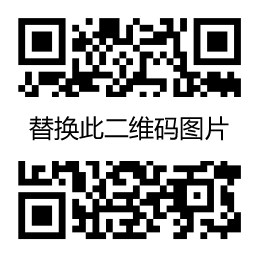单元要点分析:
Express likes and dislikes (表达个人喜恶),如:
I like rice. I dislike hamburgers.
2. Use adverbs of frequency (使用频率词), 如:
I usually have fish and vegetables.
3. Differentiate between countable and uncountable nouns(区别可数名词和不可数名词)如:
some rice , two apples
Understand and use the indefinite article(理解并使用不定冠词)如:
I want to buy a book.
I want to buy an e-dog.
教学目标
本单元的重点在介绍年轻人的生活方式。 围绕食物, 谈论如何拥有一些平衡的饮食结构
以保持身体匀称, 健康。 通过语言技能的训练以达到本单元的教学目标:
Listening: Guess the meanings of new words by looking at a question naire
Develop effective listening skills to extract specific information
Speaking: Formulate questions about diets and respond appropriately
Ask WH---questions with the right intonation
Read an article to a classmate and check for mistakes
Reading: Guess general meanings of words from the context.
Identify specific meanings
Practise intensive reaching
Writing: Express factual information bout diets and lifestyles based on the model article
Select appropriate vocabulary and sentence constructions to writ about personl details.
教材分析:
Topics: Food
Function: Talk about healthy food and lifestyles
Target language: It is lunchtime ,Hobo.
Let is have a hamburger.
You are always hungry, Eddie.
I need a lot of energy.
Why? You never exercise.
Yes , I do. I walk to my bowl many times a day .
Vocabulary: hungry ,need ,never, exercise, hate, , vegetable, dancer, tired, ten ,important, healthy, change, before, seldom, fruit, sweet, often, bread, meat, top, juice, person, water, dry, ice, cream, story, glass, tea, of, course, favourite, kilo, salt, tomato, soup, less than, not…at all, try, feel, luck, carry, supermarket, large, take in, mean, fat, stay, taste
Tasks: Healthy eating.
Task1: Writing an article on your diet
Task2; Reading your article to a partner to check for mistakes.
教学建议
让学生查字典或上网查询有关食物的词汇,并能进行归类和区分可数名词和不可数名词。
让同学为自己配制健康食谱,并在生活中使用。
让学生为自己选择适当的运动,以拥有健康的体魄去从事自己想要做的事情。
第一 课时 Welcome to the unit
一, 教学目标
1. To revise old vocabulary and learn new words about food
2. To talk about likes and dislikes with regard to food
3. To recognize names of different food
4. To use adjectives to describe different tastes
二, 教学目标
1.语言功能: Talk about different foods
2.语言目标: What food do you like ? I like hamburgers.
What food does he/she like ?He /she likes hamburgers.
How does it taste ? It is sweet /sour / salty/ spicy.
3.重点词汇: rice , hamburgers ,chicken, fish, apples, oranges, vegetables, cakes, chocolates, tea ,mooncake, lemon, vinegar, hotpot, sugar, sandwich, sweet, sour, salty, spicy.
4. 教学策略: 培养学生对同一事物要有不同的看法.
培养学生对所学的知识进行分类的能力.
三, 教学过程:
1. Present the new words:
Hungry: What time is it? Oh , it is eleven. It is time for lunch . I do not have a lot for breakfast. I am hungry now. Look at the picture2 and say “ You are always hungry , Eddie ?”
Hamburger: Oh, kook at this (show a picture of hamburger ) Let me have it. Do you like eating hamburger ?
Bowl and rice : I also like having rice. Today I will have a big bowl of rice . Because I am hunger .
Exercise: What do you do after lunch? Do you run? Do you exercise ? Let us look at Eddie.
2. Talk about the pictures on P54
1). Is Eddie always hungry?
2). What does Eddie need?
3). Does Eddie exercise ?
3. Part B
1. Get ss to work in groups to make a table and tick on a table by asking :What food do you like/dislike? What food does he/she like?
2. ask ss to report their results.
3. If there is time , ask ss to talk about their family as well.
4. homework:
1.I did not have breakfast this morning . I am h______ now.
2. He eats a b____ f rice each meal.
3. She e_____ in the garden for half an hour every day.
4. Let us have a h______.
5. It is good for your health to eat some fruit and v_______.
6. Eddie walks to his bowl many t______ a day.
7. He does not like fish, but he l_____ chicken .
8. Are you late for school ? N______.
第二 课时: Reading (1)
一, 教学过程:
1, To revise and expand words about food and lifestyles.
2. To learn about the relationship between diet and overall health.
3. To practice the technigue of skimming for overall comprehension and scanning for detail.
二, 教学向导:
1. 主题: Food and lifestyles
2. 语言目标:
Before, I seldom ate fruit and vegetables.
Now , I always eat an apples for breakfast , and I often drink some milk.
I swim twice a week.
I do not eat fast food any more .
I usually have fish and vegetables.
3. 重点词汇:
Before , diet , energy, exercise, fast , food, healthy, important, lifestyle, seldom, tired, top, dancer, change, fruit, sweet, often, bread, meet, juice, person
4. 学习策略: 快速阅读技巧.
5. 多元智能: 配制健康 食物, 适时运动
三, 教学过程:
1. Discussion in pairs:
1). What food do you usually eat ?
2). What activities do you usually do ?
2. New words presentation:
1). Guess the meaning of the new words according to the picture and sentences.
2). Teach them
3. Skimming:
Listening to tape once and find out the answers to the Qs:
1) . What does Kitty want to do ?
2). What does Daniel like doing ?
4.Scanning:
Read the text by themselves .Then do a T or F.
(课练P34)
5. Reading:
Listen to the tape and read after the tape.
6. homework:
A词型转换:
1). The girl wants to be a _______( dance).
2) We should study well and keep _____( health)
3) The students do morning _____( exercise) every moring.
4) Before he seldom ____( eat) fruit and vegetables.
5) She likes _____( play) computer games and _____( chat) with her friends on the internet.
B .书面表达
1. Good for our health
Not good for our health
第 三课时 Reading (2)
1. revise:
1) Revise the words by a
声明:有的资源均来自网络转载,版权归原作者所有,如有侵犯到您的权益 请联系邮箱:yuname@163.com 我们将配合处理!
原文地址:新教材初一 Unit 4 Food 教案-教学教案发布于2021-10-22

